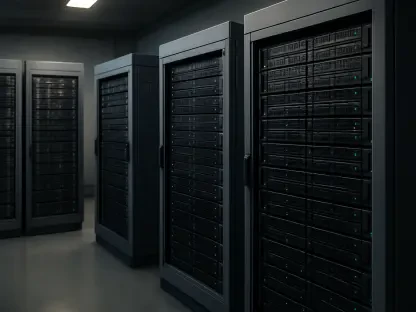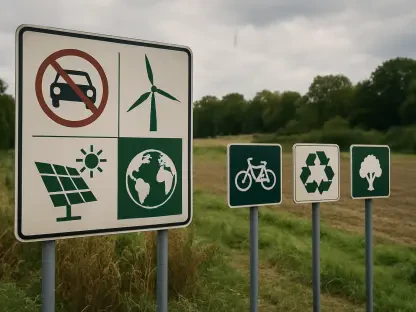What does it take to fuel the digital revolution without scorching the planet? Data centers, the backbone of blockchain and AI innovation, often consume energy at a staggering rate—sometimes matching the consumption of entire small nations. Yet, in the heart of South America, HIVE Digital Technologies Ltd. is rewriting the rules with a groundbreaking 100 megawatt (MW) expansion of its hydroelectric-powered data center in Paraguay. This ambitious project at the Yguazú site harnesses clean energy from the mighty Itaipú Dam, offering a glimpse into a future where tech growth and sustainability aren’t at odds.
This expansion, dubbed Phase 3, isn’t just about bigger numbers—it’s a defining moment for the industry. By boosting HIVE’s renewable energy capacity in Paraguay to 400 MW, the company sets a new standard for green digital infrastructure in the region. With global demand for data processing soaring, driven by Bitcoin mining and AI workloads, HIVE’s move proves that scalability and environmental responsibility can coexist. This story matters because it showcases a replicable model for tackling one of tech’s biggest challenges: balancing relentless growth with a shrinking carbon footprint.
Why Paraguay’s Clean Energy Edge Stands Out
Paraguay might not be the first place that comes to mind for cutting-edge tech, but its abundance of hydroelectric power makes it a hidden gem. The Itaipú Dam, one of the largest renewable energy sources in the world, generates enough clean electricity to power high-intensity operations like HIVE’s data centers. This natural advantage allows the company to run energy-hungry processes—think Bitcoin mining and AI computations—without relying on fossil fuels, slashing both costs and emissions.
Beyond the environmental win, this location offers strategic benefits. Paraguay’s stable energy grid and favorable policies for foreign investment create a welcoming environment for tech giants like HIVE. As the digital economy expands, this South American nation is emerging as a hub for sustainable innovation, drawing attention from global players looking to replicate such models in other resource-rich regions.
Unpacking Phase 3: A Milestone at Yguazú
The Yguazú site’s journey has been methodical, with each phase building on the last. Having already established a 300 MW capacity through earlier stages, HIVE is now rolling out an additional 100 MW in Phase 3. Construction is set to start in early 2026, with full operations anticipated by the third quarter of that year, marking a significant leap in the company’s regional footprint.
This expansion isn’t just about raw power—it’s tailored for impact. Fully powered by hydroelectric energy, the facility aims to be the largest of its kind in Paraguay, supporting intensive tasks like Bitcoin mining while pushing toward a target of 35 Exahash per second (EH/s) by 2026, up from the current 22 EH/s. Additionally, this boosts HIVE’s global renewable infrastructure to 540 MW, spanning operations in Canada and Sweden alongside Paraguay, underlining a cohesive strategy for sustainable growth.
The local implications are equally striking. This project positions Paraguay as a leader in clean tech, fostering economic growth through job creation and infrastructure development. It’s a clear signal that renewable energy can drive not just environmental goals but also tangible community benefits.
Leadership Perspectives: Vision Behind the Growth
HIVE’s leadership paints a vivid picture of the strategy fueling this expansion. Executive Chairman Frank Holmes underscored the focus on sustainability as a core driver, stating, “Scaling infrastructure with purpose is key. Bitcoin mining capacity has jumped from 6 EH/s to nearly 22 EH/s in under a year, and the aim is 25 EH/s by the end of 2025.” This reflects a relentless push for operational milestones rooted in green principles.
President and CEO Aydin Kilic highlighted the company’s dual focus, explaining, “Tier 1 Bitcoin mining ensures steady cash flow, while Tier 3 high-performance computing (HPC) and AI initiatives via the BUZZ HPC division target future growth. A partnership with Bell Canada on the AI Fabric initiative will multiply HPC capacity fivefold by 2026.” This balance of immediate returns and long-term innovation sets HIVE apart in a crowded field.
From a local angle, Gabriel Lamas, Country President of HIVE Paraguay, emphasized regional pride, noting, “This cements Paraguay as a clean energy innovation hub. With existing infrastructure ready, teams are poised to deliver this phase efficiently.” These voices collectively reveal a unified vision—sustainability, scalability, and strategic partnerships form the bedrock of HIVE’s ambitions.
Lessons from HIVE: A Blueprint for Green Tech
HIVE’s approach offers valuable insights for other companies navigating the intersection of tech and sustainability. Leveraging renewable sources like hydroelectric power, as seen with the Itaipú Dam, slashes both environmental impact and operational expenses—a win-win for energy-intensive sectors. This model shows that clean energy isn’t just feasible; it’s a competitive edge.
Another takeaway is the power of a diversified revenue stream. By pairing Bitcoin mining for short-term gains with AI and HPC for future growth, HIVE mitigates risks and taps into emerging markets. Strategic alliances, such as the collaboration with Bell Canada, further amplify capacity and reach, demonstrating the value of cross-industry partnerships.
Finally, phased scalability stands out as a practical tactic. Incrementally expanding from 300 MW to 400 MW at Yguazú minimizes disruption while maximizing output, offering a roadmap for others to scale sustainably. These principles could guide tech firms and policymakers alike in building digital infrastructure that doesn’t compromise the planet.
Reflecting on a Sustainable Legacy
Looking back, HIVE Digital Technologies’ 100 MW expansion in Paraguay marked a turning point in the quest for sustainable digital infrastructure. This bold step at the Yguazú site not only elevated the company’s global renewable capacity to 540 MW but also showcased how clean energy could power the most demanding tech sectors. The integration of Bitcoin mining with AI and HPC capabilities through partnerships like the one with Bell Canada highlighted a forward-thinking approach that balanced profit with purpose.
As industries grappled with escalating energy demands, the lessons from this project offered a clear path forward. Stakeholders across the tech landscape were encouraged to prioritize renewable sources, embrace diversified business models, and scale operations thoughtfully. The success in Paraguay served as a beacon, urging global innovators to rethink how digital growth could align with environmental stewardship, ensuring that future expansions built on this foundation of sustainability.









